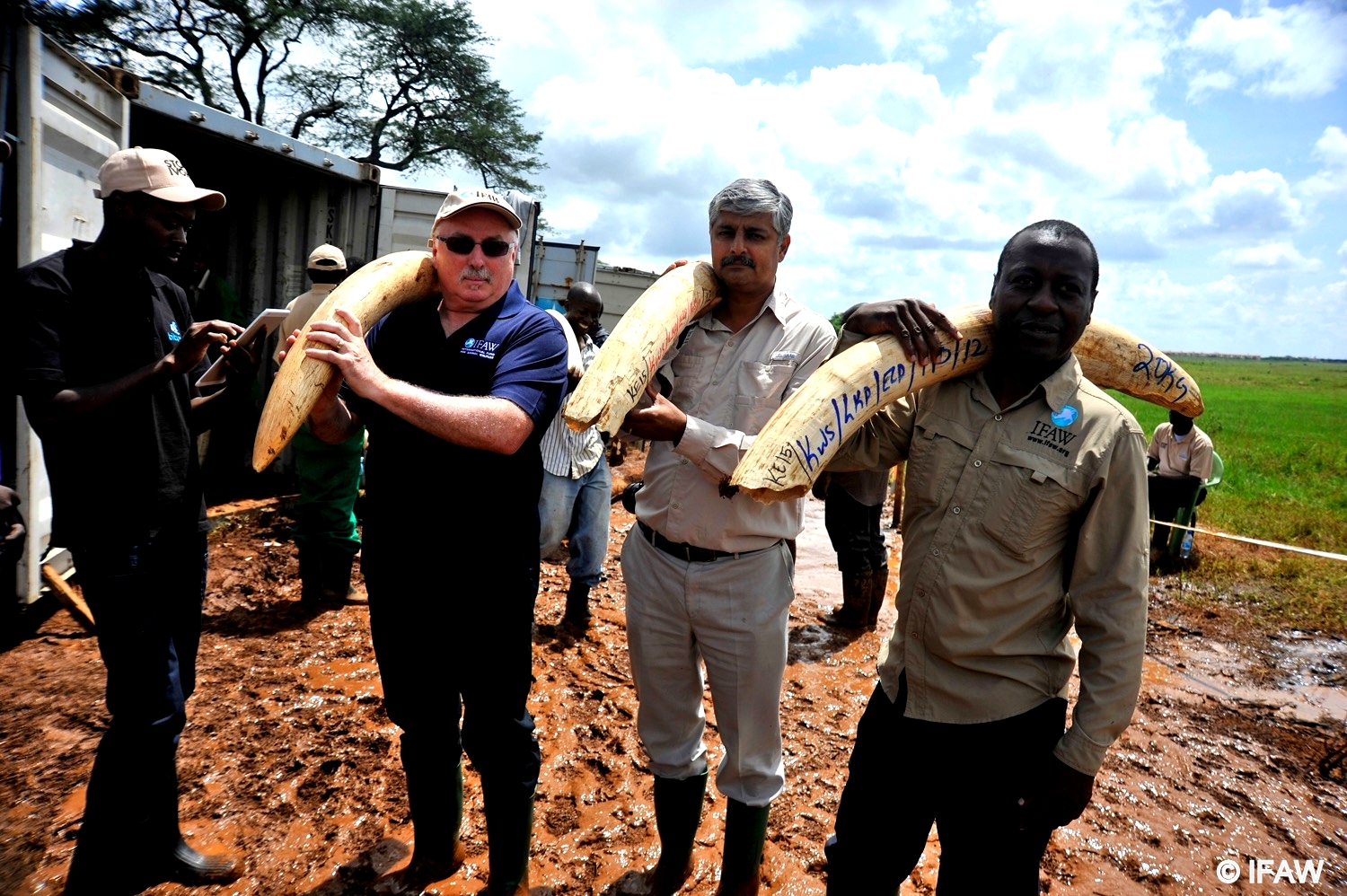Major Burn on Illegal Wildlife Trade as Kenya Sends Ivory, Rhino Horn up in Smoke
April 30, 2016: Kenya sent a clear and potent message to criminals participating in the illegal ivory and rhino horn trade by torching 105 tonnes of ivory and 1.35 tonnes of rhino horn at Nairobi National Park this afternoon.
A Kenya Wildlife Service ranger guards the ivory stockpile in a transportation container
The ivory, representing Kenya’s entire remaining stockpile (barring that retained as evidence in criminal trials, for posterity, education and scientific research), was the largest quantity destroyed anywhere in the world. This historic event was witnessed by His Excellency Ali Bongo Ondimba of Gabon, who together with his host His Excellency President Uhuru Kenyatta of Kenya set alight two of the 11 ivory pyres.
A panorama of the preparations for the ivory and rhino horn burn
The presidents had earlier in the day concluded a two-day inaugural summit as members of the Giants Club, an exclusive forum that brings together African Heads of State, global business leaders and elephant protection experts to secure Africa’s remaining elephant populations and the landscapes they depend on. In his address, President Kenyatta affirmed that his government had declared “total war” on poachers. “There is convincing evidence that poaching is aided by international criminal syndicates; it fuels corruption, it undermines the rule of law as well as security and even provides funding for other transnational crime”, he said. Richard Leakey, eminent conservationist and Chairman, Kenya Wildlife Service, who delivered the keynote at the event, emphasised the need to “end the ivory trade once and for all” and “strengthen conservation measures” in order to save elephants.

Azzedine Downes (President & CEO, IFAW), Vivek Menon (CEO, WTI and Senior Advisor to the President, IFAW) and James Isiche (Regional Director, IFAW – East Africa) help carry ivory to the site for burning
Azzedine Downes, President & CEO of the International Fund for Animal Welfare (IFAW) attended the summit as a leader in elephant conservation and also witnessed the historic ivory and rhino horn disposal. “What we have witnessed today is truly a remarkable event in the continued fight against ivory and rhino horn trafficking. By destroying the largest ivory stockpile, Kenya has again demonstrated that the only valuable ivory and rhino horn is on a live animal,” he stated.
James Isiche and Vivek Menon with the burning ivory and rhino horn pyres in the background
Vivek Menon, Wildlife Trust of India CEO and Senior Advisor to the President, IFAW, was also among a select group of global conservation experts that attended both the Giants Club forum and the ivory burning. “To witness the burning of the remains of 10,000 elephants is both sad and poignant,” he said, “but amidst the gloom is the hope that this will ensure that the world gets a clear message – the ivory trade is ecologically, economically and morally repugnant. The survival of both Asian and African elephants depends on our wisdom to say no to ivory. That can stop the bleeding.”
Destroying over 100 tonnes of a substance like ivory is no simple proposition. The fire to the 11 pyres was accelerated using petrol; it will continue to burn continuously for several days under tight security. At the end of the burn only very small chips, which have no value, will be left.
A view of the ivory and rhino horn pyres set alight
Since 2011 over 100 tonnes of ivory have been destroyed by 18 countries including Chad, Congo Brazzaville, China, France, UAE, Sri Lanka, Gabon, Ethiopia, Italy, Belgium, USA, Cameroon, Malaysia, Malawi, Mozambique, Thailand, Philippines and Kenya. Despite these victories, ivory trade is pushing endangered elephants towards extinction. Every year, 25,000-30,000 African Elephants are poached to supply the ivory trade; ivory seizures continue to increase with over 150 tonnes seized between 2011 and 2015.
Most illegal ivory is destined for Asia, in particular China, where it has soared in value as an investment vehicle and is coveted as ‘white gold’.